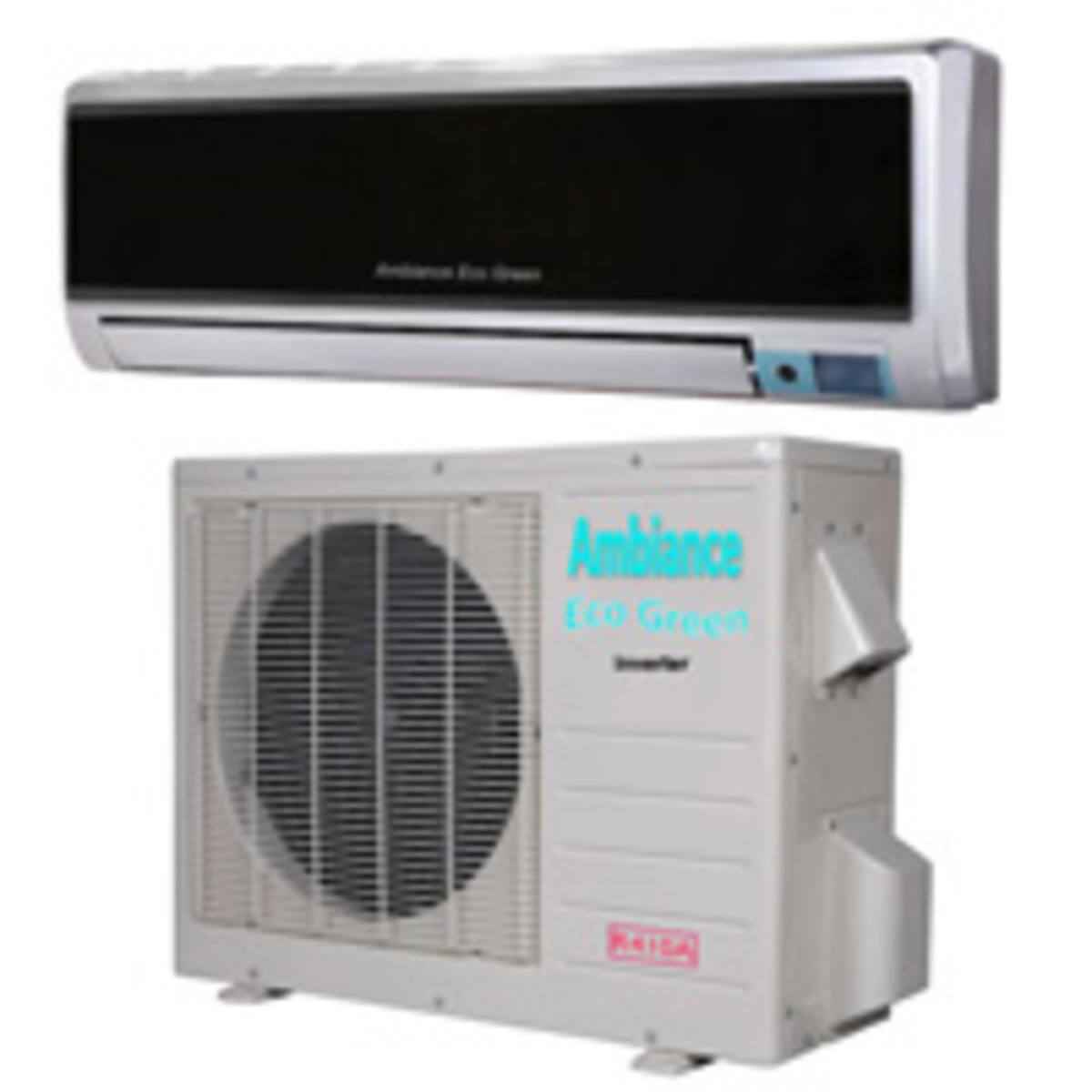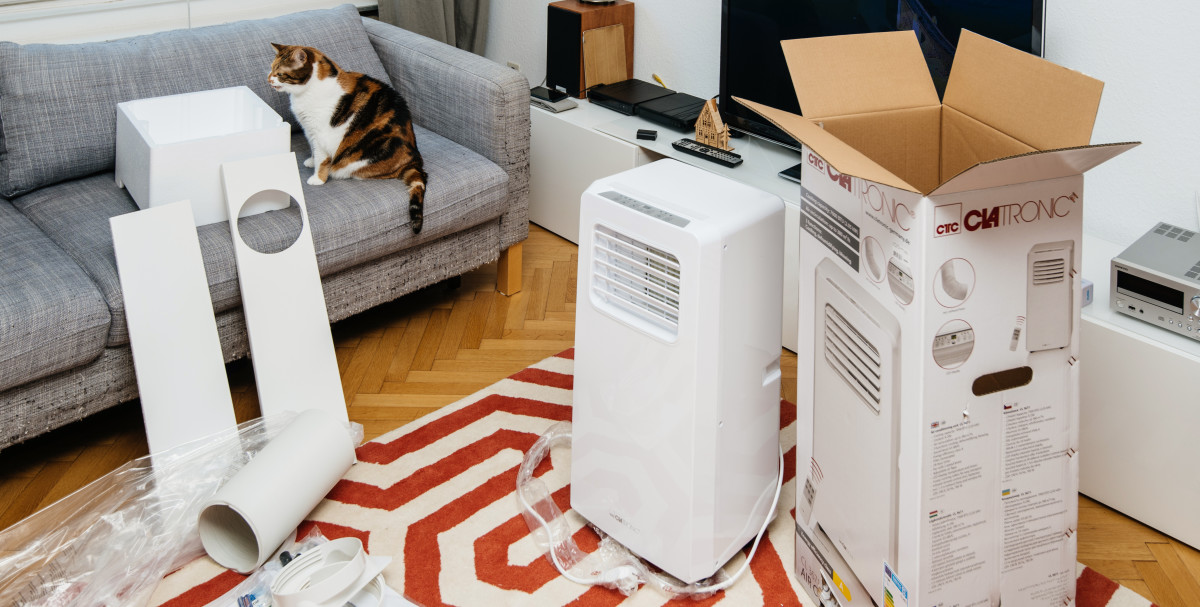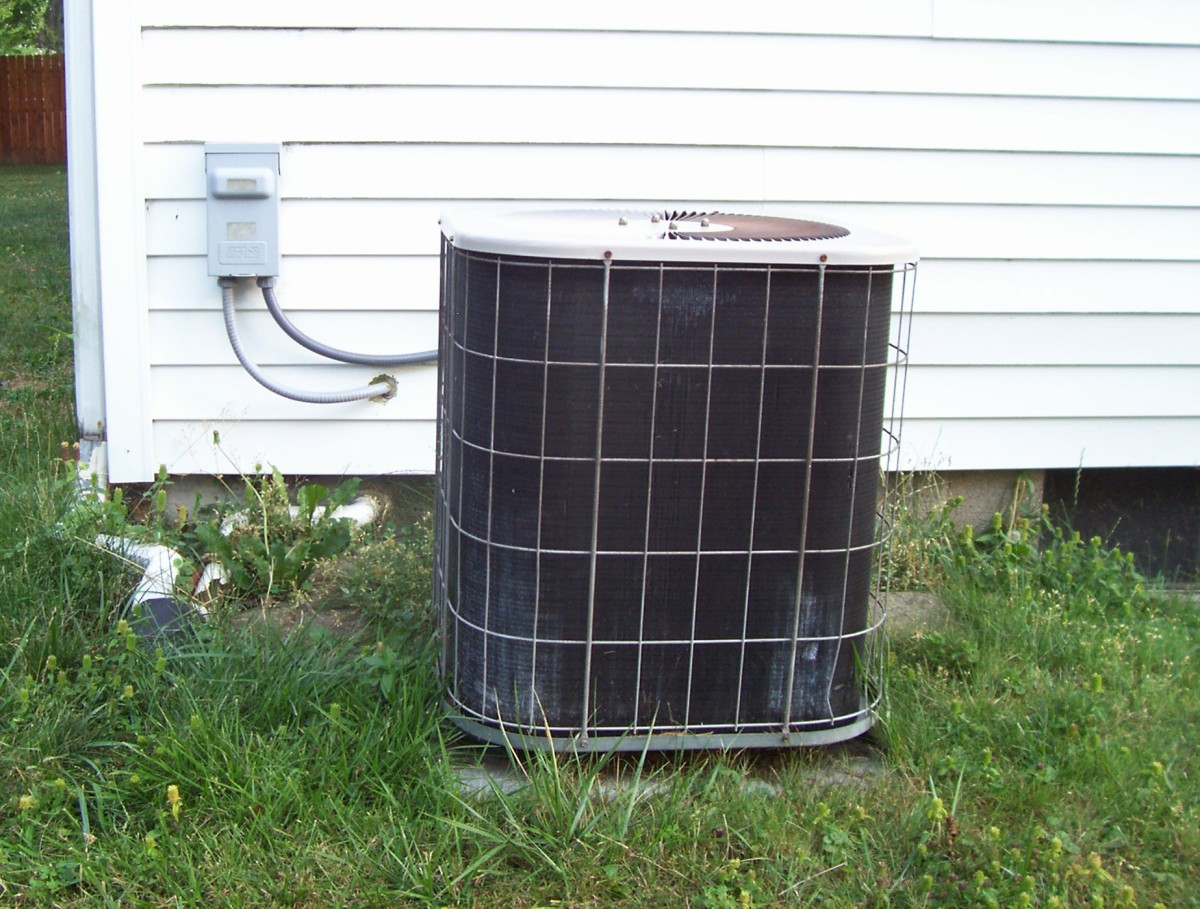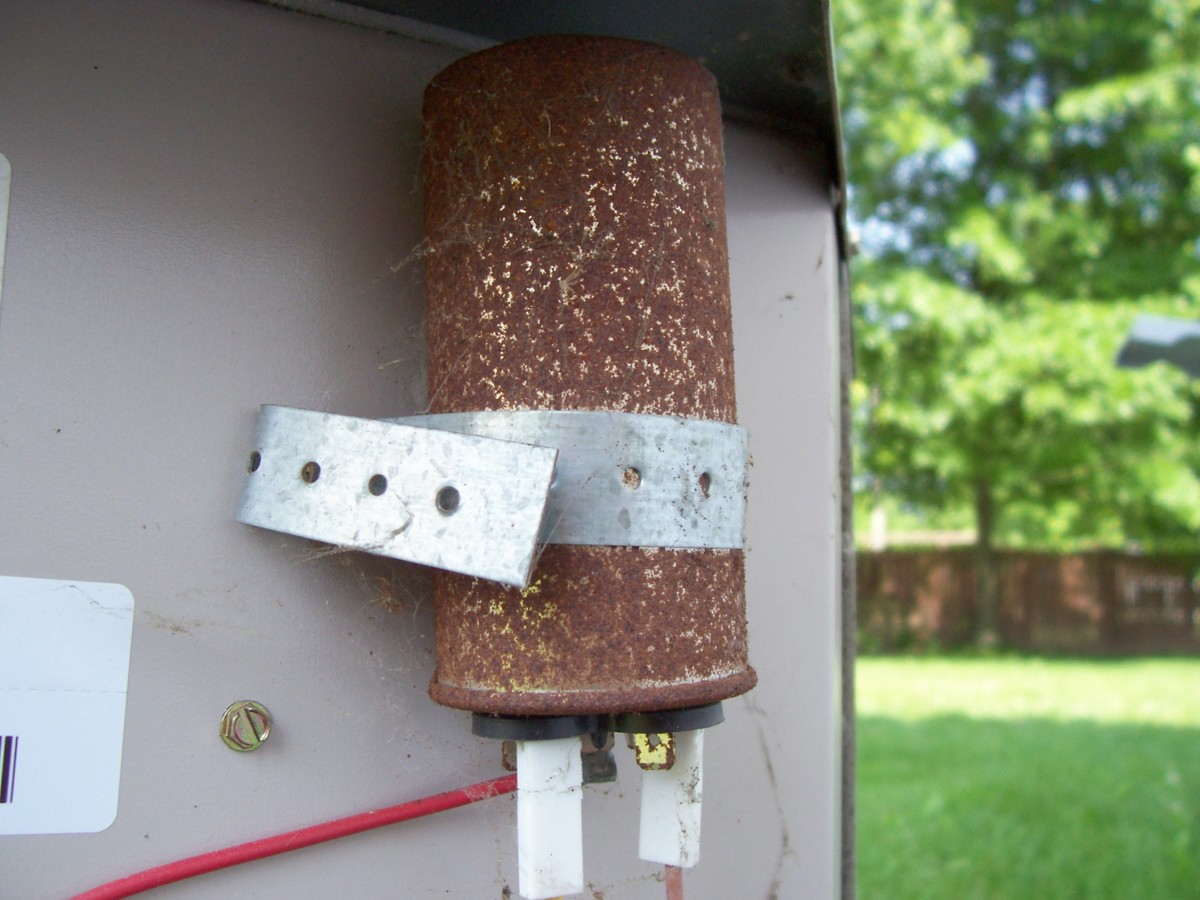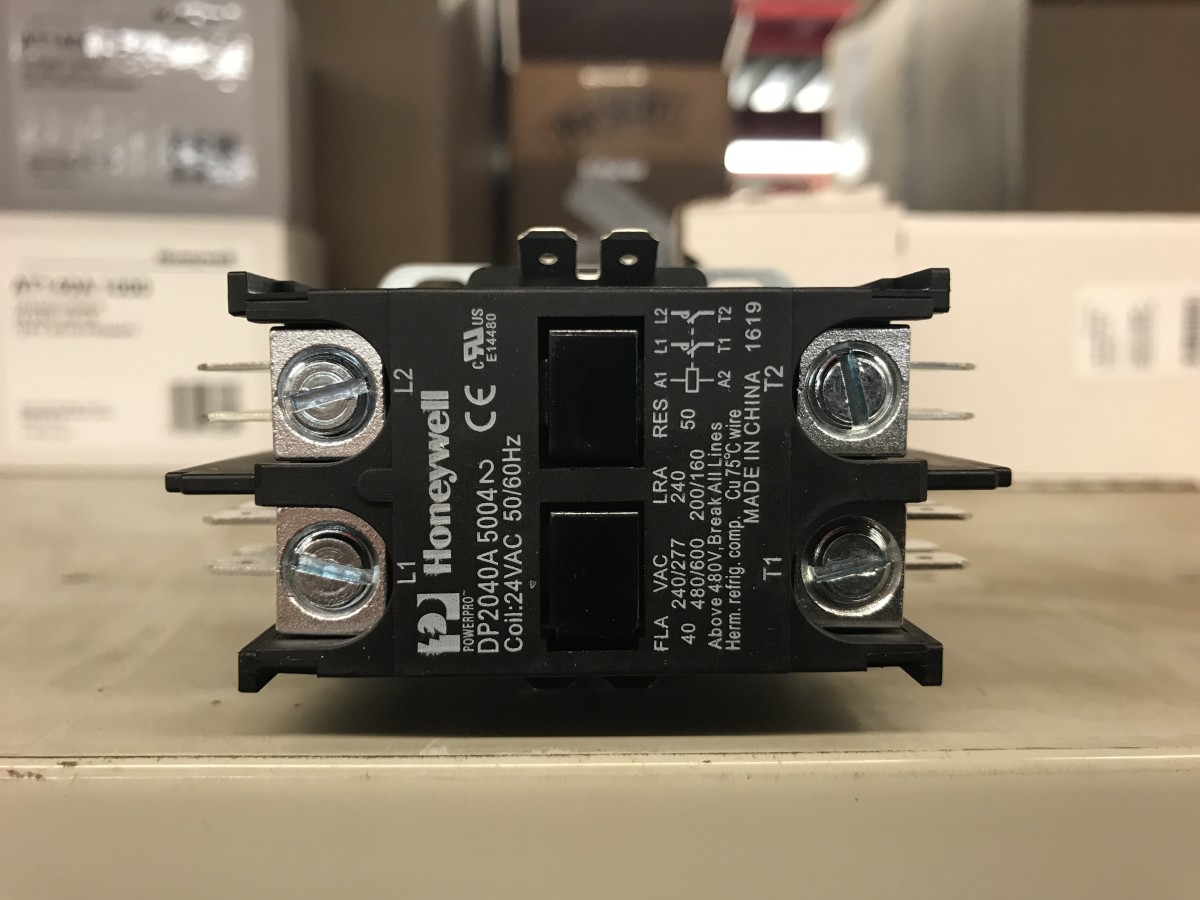How Does an AC System Work?
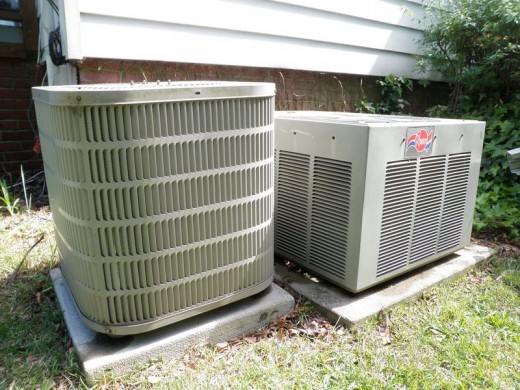
Air conditioning has been defined as the removal of heat from indoor air for thermal comfort. We all know what a A/C system is, where its located, and what it does. But do you know how it works? How it cools the air, then distributes it throughout your home or office? Let's start from the beginning, with where modern A/C came from.
History of A/C Units
The idea of air conditioning dates back as far as Ancient Rome, when richer people paid to have aquaduct water circulate through certain rooms to help cool them down. Other techniques involved cisterns and wind towers to help cool buildings. The 2nd-century saw the invention of the rotary fan, which had 7 fan heads, and was manually powered. The next huge breakthrough came in 1758, when Ben Franklin and John Hadley conducted an experiment at Cambridge University, to explore how evaporation could be used to cool an object. They hypothesized that using highly volatile liquids such as alcohol or ether could be used to lower an objects temperature down below freezing. Using this principle, they lowered the temperature of a mercury thermometer to 7°F, while the room temperature remained 65°F. The next major breakthrough happened 62 years later (1820), when a British inventor discovered that by compressing and liquefying ammonia, he could chill air when the ammonia evaporated. 22 years later, in 1842, Florida physician John Gorrie created a compressor to make ice, which he used to chill the air for his patients in Apalachicola, Florida. He is credited with coming up with the idea of modern A/C, as he hoped to use his ice making machine to regulate the temps of buildings. Although the prototype leaked, and worked irregularly, he was awarded a patent for his device, although, after his financial backer died, he wasn't able to develop his machine. Also to his demise, the "Ice King" of the time, Frederic Tudor, is credited with launching a smear campaign, thus pushing the idea of A/C away for another 50 years. Fast-forward to 1851, and James Harrison's first mechanical ice making machine is making ice for the first time on the banks of the Barwon River in Greelong. Soon following in 1854 were patents for a commercial ice machine, as well as for an ether vapor-compression fridge system. This is the basis of the modern A/C unit, with Harrison's model using a compressor to force refrigerant gas through a condenser, where it would cool and liquefy. It would then get circulated though the coils and get vaporized again, cooling the entire system. The machine could produce roughly 6,600 lbs of ice in a day. Attempts at creating the first cooled ship in 1873 proved disastrous for Harrison, though, as the ice was consumed faster than expected. In 1902, Willis Haviland Carrier began experimenting with an air conditioning design to try to solve an application problem in the Sackett-Wilhelms Lithographing and Publishing Company in NYC.
Curious?
Did you know this A/C history?
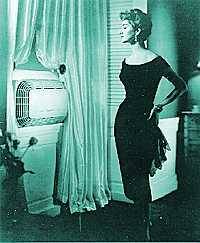
The First "Air Conditioner"
This system became the first "air conditioner", beginning operating service on 17 July, 1902. It was designed to improve the manufacturing process control in a printing plant. Carrier was not only able to control temperature but also control the humidity in the air. He basically took the principles of heating with steam and reversed them. Instead of hot coils, he sent air through cold ones filled with cold water. the air blowing over the coils cooled the air, and you could control the moisture the air could hold. Because of this, you could effectively control the humidity in a room, and by lowering the heat and humidity helped to maintain the consistent paper dimensions and ink alignment. Later, the technology was applied to increase productivity in the workplace, and the very first AC company was formed to meet rising demand. Then, in 1906, Stuart Cramer combined moisture with ventilation to "condition" the air, controlling the amount of humidity in textile plants, creating evaporative cooling. Original A/C units and fridges used toxic and often flammable gases, that resulted in fatal accidents when they leaked. In 1928, Thomas Midgley, Jr. created the solution, a chlorofluorocarbon gas known as Freon. Freon, a trademark owned by DuPont, is a type of refrigerant used in air conditioning systems, due to its efficiency in cooling, as well as its stability. Most of today's advances in the A/C field are placed on efficiency, as well as improving indoor air quality. Also important on many lists is reducing the global impact that CFC's, HCFC's, and HFC's have upon our planet.
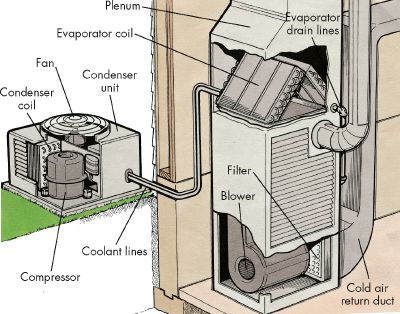
How Does a A/C System Work?
Modern A/C units use refrigeration to chill the indoor air, and take advantage of a physical law: when a liquid converts to a gas, it absorbs heat. A/C units exploit this principle to work properly. They force refrigerants to evaporate and condense over and over again, in a closed system of coils. Refrigerants all have properties that allow them to change form at low temperatures. A/C units also use a system of fans that move warm interior air over the cold, refrigerant filled coils. This is the air return system. Once the warm air reaches to coils, the refrigerant absorbs the heat as it changes from a liquid to a gas. Once in gas form, the compressor then puts the gas under high pressures, creating unwanted heat. All of this heat is then moved outside with a set of second coils, and a secondary fan. As the gas cools, it changes back to a liquid, and as a liquid, the process starts all over again. Basically, Refrigerant is cooling the air inside a building, causing the refrigerant to turn into gas. This gas is sent outside, where it cools, becoming a liquid again, where it returns back inside to cool the air.
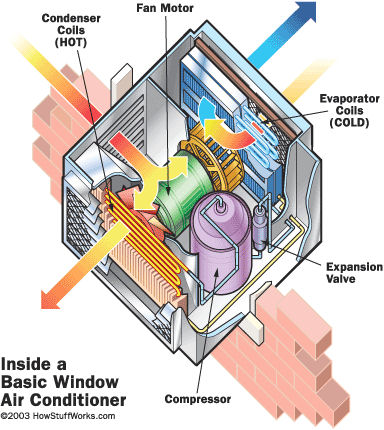
The Parts of an Air Conditioner
There are a few things to discuss before hoping directly into this topic. The main job of an A/C unit is to cool indoor air. But that's not exactly what all it can do. They can also monitor and regulate the temperature via a thermostat. They also usually contain air filters for air quality control. A/C units also function as a dehumidifier. All of the major parts of an A/C system are used to move air in 2 directions, inside and outside. This is done by evaporators, condensers, expansion valves, and compressors. There are also 2 sides to every A/C unit. The cold side of an A/C unit contains the evaporator and a fan to blow air over the cold coils, and then into the room. The hot side contains the compressor, condenser, and another fan, used to vent off hot air and cool the compressed gases. Between the 2 sets of coils is an expansion valve that regulates the amount of refrigerant moving into the evaporator. The compressor is a large electric pump that pressurizes the gas and turns it into a liquid. Additional sensors, timers and valves may be present, but all A/C units work by this principle, and all include these main parts. Window A/C units are slightly different, as they do the job in a smaller space, and central air units also manage the heating systems of the home as well. In very large buildings and commercial cases, the exterior unit is usually located on the roof.
What are your thoughts?
What temperature do you prefer to keep your house at?
Some Helpful Links
- Air Filters - Everything You Wanted to Know (and Hopefully More!)
Air Filters are a common, everyday thing in everyone's home that is equipped with an AC unit. But few know about the types of filters and filtration methods, and what they can do to help improve air quality within their home. - Common AC Problems (And Solutions to Fix Them)
Having A/C problems alone are a total bummer, but having them during summer can be almost catastrophic. Prevent your system from going out, and preform a check up and some basic maintenance today to prevent your A/C unit from dying tomorrow. - Tips to Reduce Your Heating Bill
This is a posting on some of the ways to help reduce your carbon footprint, as well as reduce your heating and electrical bill. With 10, simple, you can do it at home, tips, you should be able to reduce your heating bill as much as 20%, maybe more! - Ways to Stay Cool this Summer.
This is a posting on some of the ways to help reduce your carbon footprint, as well as reduce your cooling and electrical bill. With 15, simple, you can do it at home, tips, you should be able to reduce your cooling bill as much as 20%, maybe more! - Air Conditioning (AC) Repair
Beachside AC is a full service air conditioning and heating repair company. Servicing Destin, Fort Walton, Freeport, Crestview, Santa Rosa Beach and Niceville.


